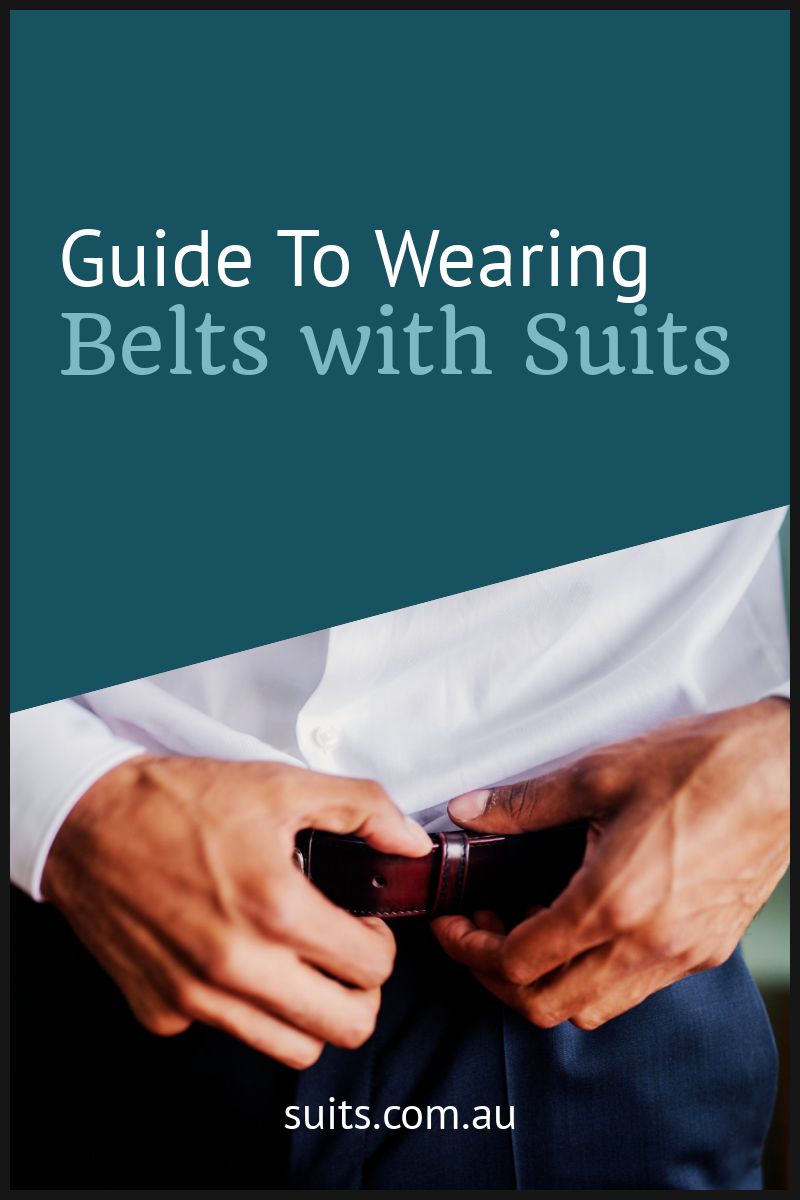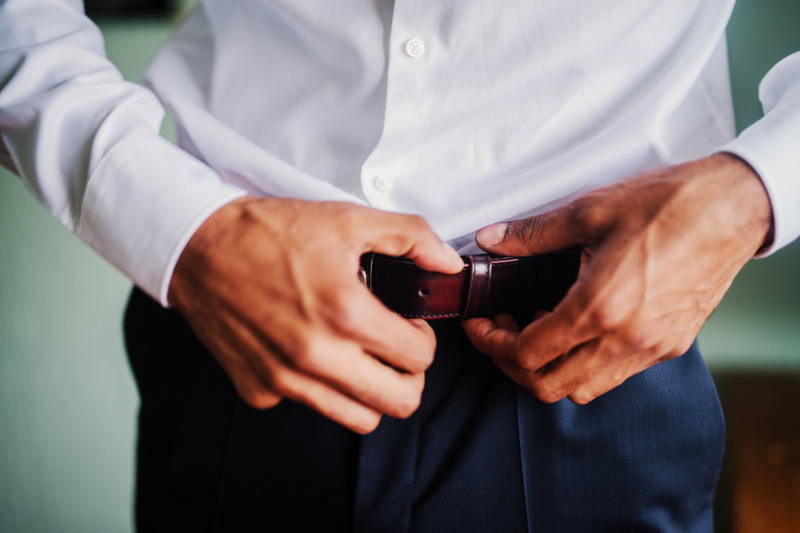A belt seems like such a simple accessory that doesn’t require much thought, but it can make or break your suit styling and be the difference between looking well dress and stylish, and missing the mark.
Read through our guide of how to wear and choose a belt for your suit.
Why you should wear a belt, but shouldn’t need one
You may be asking, what do you mean “I should, but shouldn’t have to wear a belt”? Well, the reason you should wear a belt is because it is a great accessory for a suit. But if you are wearing a well fitted suit then you shouldn’t need a belt to keep your pants in place.
Wearing a contrasting belt, for example, a brown belt with blue suit trousers and a pale blue shirt will help to divide your torso from your lower body. This breaks up the vertical plane. However, this can make you look wider or shorter. If you want to elongate your body and appear taller you could opt for a belt in a similar colour to your trousers so that it blends in more.
Nowadays there is more of a trend towards not wearing a belt. If your suit fits you well then a belt should purely serve an aesthetic purpose. So that means you can choose to not wear a belt with your suit. What you should consider though is the belt loops on your trousers. If they are not overly noticeable and blend in, then you can get away without wearing a belt. However, if the belt loops are quite visible then your outfit might look like you are missing something and forgot your belt. The other option is to have the belt loops removed if you really don’t want to wear a belt or find trousers that do not even have belt loops at all.
Also, remember a belt adds visual interest to your look.
Differences between Dress & Casual Belts
The main difference between a dress belt and a casual belt is the buckle. While casual belts can have a variety of buckle shapes, a dress belt is typically a simple, single flat buckle. If the buckle is more rounded or ornate it is usually a casual belt.
Dress belts are also usual smooth leather. Woven and patterned leathers (such as crocodile) are borderline. While stitched and overly decorative leathers or other fabrics are casual.
How to match your Belt to your Suit
The basic rule of how to match your belt to your outfit is simple; match your belt and your shoes. If you have black leather shoes, then you should wear a black leather belt. If you have dark brown shoes then you should wear a dark brown belt. Now you don’t have to get the colour exactly the same, which can be tricky with browns, just make sure you have a similar shade and tone.
Breaking this rule can be risky because if it doesn’t work you might look like you don’t know basic suit styling. But that doesn’t mean you can’t try it out, perhaps with a belt that matches your trousers and blends in, or a colourful belt to stand out and make a statement.
Belt Sizing
The basic rule is to always make sure your belt has enough length to go through any loop on the belt itself, and through the first belt loop on your pants. If in doubt it is better to be a bit shorter than to have a long belt that wraps around you.
Generally, you should aim to use the middle or third hole of the belt when doing it up.
Often quality belts can be shortened as you can usually remove the buckle, trim the belt and then replace the buckle again.
Also, remember to consider the belt width. A belt that is too skinny can look wrong and out of proportion, and if the belt loops are larger it could move around.
Belt Materials
Traditionally men’s belts are made from leather, however, you can also find other materials such as canvas and cotton weaves, as well as synthetic materials and fake leathers.
Belt Colours
Because it is traditional to match your belt with your shoes, most men’s belts come in browns and black. The good thing about this is you don’t need to invest in too many belts in order to cover all of your style basics.
What about suspenders?
If you don’t want to wear a belt but you need to keep your pants in place, then the other option is suspenders. Because you don’t see the suspenders when wearing a suit jacket you can have the no belt look while still keep everything secure.
Buying a Belt
If you adhere to the rule of matching your belt with your shoes then you don’t need too many belts in your wardrobe. So our recommendation is to invest a selection of quality belts that you can wear with your suits, such as a black leather dress belt and a brown leather dress belt.
See our list of recommended online belt retailers.



It has gotten more common the past few years for men, usually younger, but even middle age guys like myself, to skip belt when wearing a suit.
Strict security survillence after 911 terrorist attacks resulted in government buildings all installing metal detectors and working as a lawyer everyday I had to pull belt off to get inside area courthouses.
Figured, I hadn’t worn a belt with blue jeans since back in jr. high school, so would try and see if I could get away not wearing a belt around suit trousers too.
Now almost 18 years later, seldom wear one with a suit anymore. Look is perfect n for shorter guys, like myself. Wear a colorful tie and keep jacket on people don’t notice belt loops aren’t used.
It takes a few times, but if done regularly enough trousers with belt missing will become accepted by others as your personal style choice.